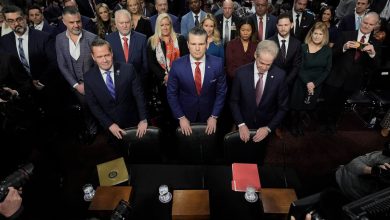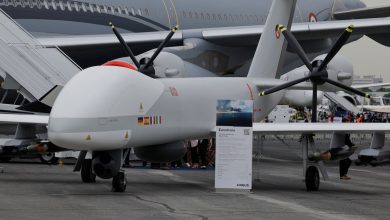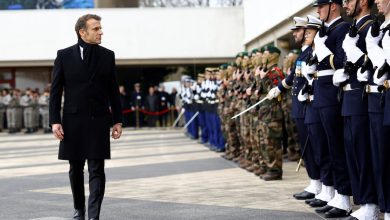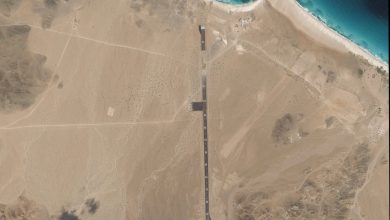Pentagon chief visits island near South China Sea in sign to Beijing
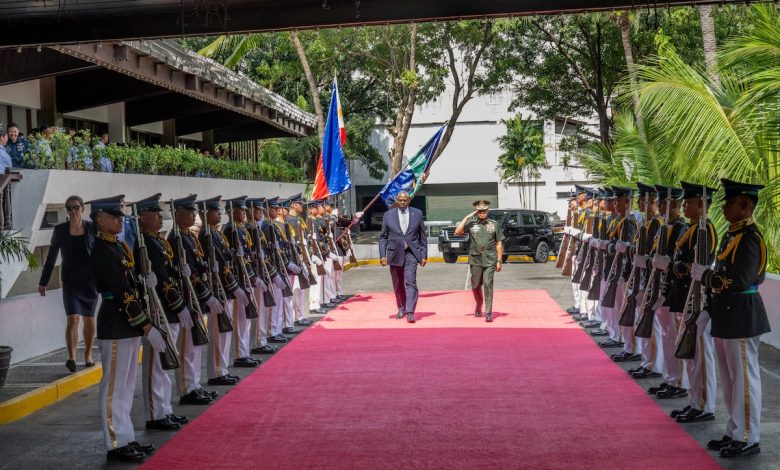
PALAWAN, Philippines — U.S. Secretary of Defense Lloyd Austin visited a Filipino military base only miles from the South China Sea, a sign of resolve against Chinese harassment in the waterway that flared this summer.
Antonio Bautista Air Base was Austin’s final stop in the Philippines, a country he’s visited more than any previous secretary of defense. He spoke with officials from Manila’s Western Command, which defends Filipino claims to the South China Sea — mapped in bright green on the wall inside the base’s headquarters.
The trip itself is a message to China, which claims ownership over much of the area despite a 2016 ruling from the United Nations saying otherwise.
In response, the U.S. and Philippines’ militaries have recently become much closer partners. American officials often attribute this warmth to shared interests and values. During a Tuesday press conference, though, Manila’s top defense official was more direct.
“The operative factor … which has caused this alliance to be as robust as it is, is the Chinese overreach and aggression,” said Secretary of National Defense Gilberto Teodoro, noting that Austin initiated the visit.
Teodoro was referencing behavior around the islands mapped in the headquarters’ lobby, in particular Second Thomas Shoal. This is the site of an ageing Filipino outpost that houses a clutch of its marines.
To protest the Philippines’ presence there, Chinese coast guard ships have blocked missions to resupply the outpost. At times they’ve done so violently, including a standoff this June in which Chinese forces rammed Filipino ships and brandished knives, cutting off one sailor’s thumb.
The crisis nearly triggered a mutual defense treaty between the U.S. and the Philippines, whose president has said would activate if China killed a Filipino citizen.
Austin later declined to specify whether the U.S. agrees with that threshold, though American officials have long argued that the treaty applies to the South China Sea.
China and the Philippines later negotiated a temporary deal to avoid further crises around Second Thomas Shoal. Rather than ceasing altogether, Chinese ships and planes have kept up such behavior around other disputed parts of the South China Sea.
Austin is not America’s first defense secretary to visit Palawan, but he’s the first one to do so in this era of conflict around the waterway.
A painting a local student made for Austin drove home the point. It featured the American and Philippines’ flags above two clasped hands in uniform, with the words: “West Philippine Sea, it’s ours,” referring to another name for the South China Sea.
To help the Philippines defend its territory, the U.S. recently sent the country half a billion dollars in long-term security aid, more than 12 times the number last year. Meanwhile, Manila is also funding a more capable military — investing $35 billion in the effort over 10 years.
The aid will act as a kickstart, mainly buying equipment to help Manila monitor its waterways. While at the base Tuesday, Austin watched a demonstration of maritime drones already being delivered to the Philippines through U.S. assistance.
These systems, which look like rowboats with a swiveling camera on top, are already deployed to Oyster Bay, another part of Palawan. Austin said that the Philippines will be ordering more drones with the aid.
The base Austin visited on the island is one of nine military sites where the U.S. can rotate in equipment of its own — a number of locations that almost doubled in his time as secretary. Some of the bases are more developed than others, and even the one on Palawan partly overlaps with the jungle, as wild animals roam and locals hang clothes out to dry.
Though Congress has yet to pass this year’s defense budget, the Pentagon has requested $128 million to build military infrastructure across the nine sites. The number is more than twice that of the previous year.
Projects like these will help the Pentagon bring more and more advanced equipment to the country, such as the Typhon, a missile launcher with a range long enough to catch China’s attention.
The U.S. deployed one of the launchers to the Philippines this spring, and Manila has sought to buy one of its own. American defense officials, speaking with reporters traveling alongside Austin, acknowledged the interest but said the weapon is still in development and not yet for sale.
Noah Robertson is the Pentagon reporter at Defense News. He previously covered national security for the Christian Science Monitor. He holds a bachelor’s degree in English and government from the College of William & Mary in his hometown of Williamsburg, Virginia.
Read the full article here

